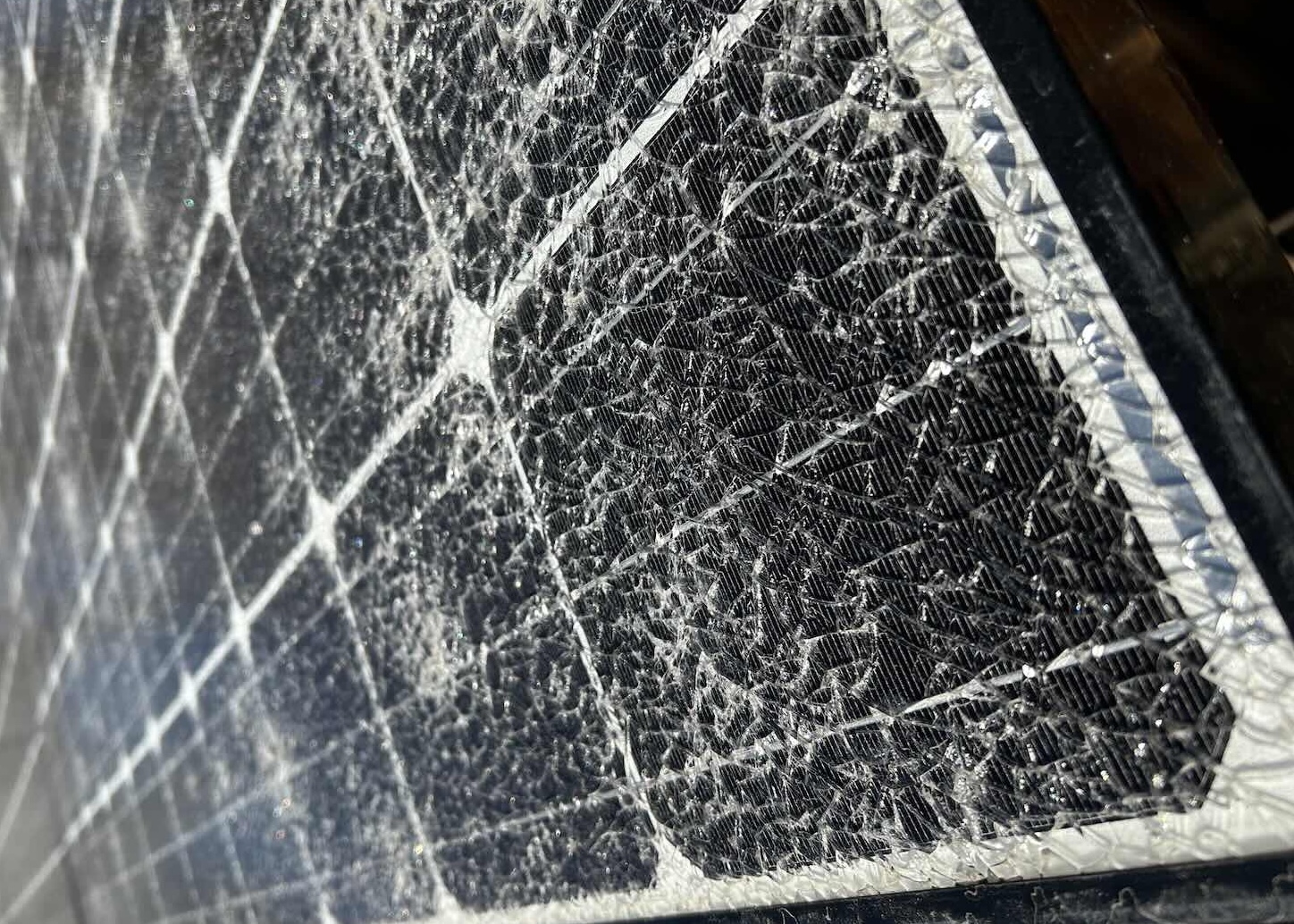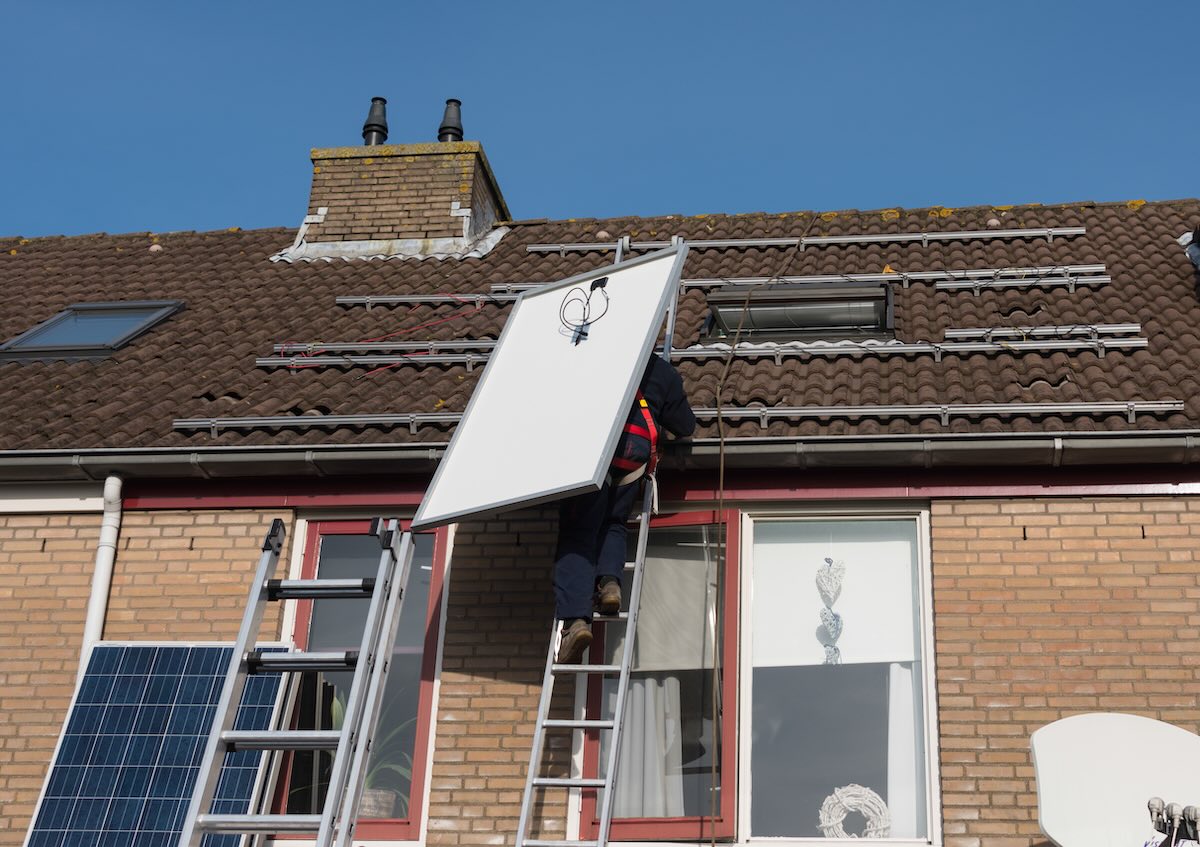Experiencing a hailstorm can be particularly unsettling when you’ve invested in solar energy. The sound of hailstones striking your roof isn’t just noise; it’s a reminder of the potential risk these extreme weather events pose to your solar panels and renewable energy systems. While hailstorms are rare in many parts of the globe, in areas like Colorado and Texas, these storms represent a significant threat to solar power projects. Solar panel hail damage is no joke and can threaten your energy investment. Understanding the risk and the speed at which hailstones travel is critical; they can reach velocities between 10 mph and 75 mph, which can significantly impact the extent of damage to your solar modules. Protecting your investment against such weather-related risks is essential. We outline a few key things to consider in the article below.
Source: https://www.solarreviews.com/blog/solar-panel-hail-damage-what-you-need-to-know
It’s essential to understand how your solar panels might be affected in areas like Colorado and Texas, known for their frequent hailstorms and extreme weather. Designed to endure harsh weather, including moderate hail, solar panels and renewable energy systems can withstand quite a bit of risk. However, severe hailstorms and high-velocity hail events have the potential to inflict considerable damage to your solar modules and overall energy investment.
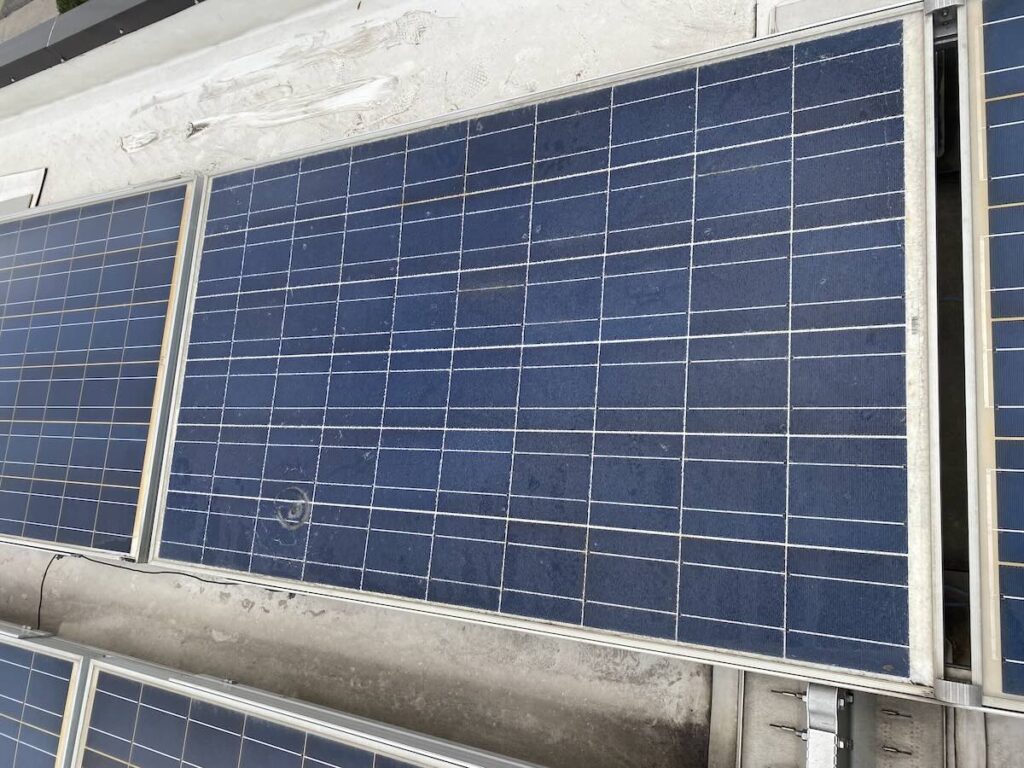
Hail can significantly damage solar panels, mainly when hailstones are large and fast-moving. Such impacts can cause external and internal harm. The external layer, a protective glass covering the solar cells, may crack or shatter. Internally, the solar cells can suffer damage or breakage.
This kind of damage can decrease the solar panel’s efficiency. Cracks and scratches on the panel’s surface can obstruct sunlight absorption, acting similarly to shade.
This kind of damage can decrease the solar panel’s efficiency. Cracks and scratches on the panel’s surface can obstruct sunlight absorption, acting similarly to shade.
Understanding Hail Damage to Rooftops
Hailstorms can cause significant damage to roofs, depending on the size of the hail and the type of roofing material. Here are some common types of damage that occur after a hailstorm:
- Shingle Granule Loss: Hail can knock off the granules on asphalt shingles, which act as a protective layer. This can expose the underlying shingle material to the elements, leading to faster wear and potential leaks.
- Cracked or Fractured Shingles: Larger hailstones can cause cracks or fractures in shingles, particularly in older or already worn roofs. These cracks can allow water to seep in and cause leaks.
- Dented Metal Roofing: Metal roofs can suffer from dents or dings after a hailstorm. While it may not cause immediate leaks, the material’s aesthetic damage and potential weakening can be concerning.
- Bruising on Shingles: Sometimes, hail will cause soft spots or bruising on shingles, which may not be immediately visible but can lead to problems over time as the material weakens.
- Damaged Roof Vents, Flashing, and Gutters: Hail can dent, crack, or damage other parts of the roof system, like vents, flashing, skylights, and gutters, all of which are crucial for proper drainage and protection from the elements.
- Dislodged or Loose Shingles: Severe hailstorms can cause shingles to become loose or even dislodge them entirely, exposing the roof deck to further damage.
- Wood Shake or Slate Shingle Damage: If your roof is made of wood shake or slate shingles, hail can crack or break them, leaving gaps and potential for water infiltration.
After a hailstorm, it’s important to have your roof inspected by a professional to identify any damage that could lead to larger issues for both your home and solar energy project if not addressed quickly.
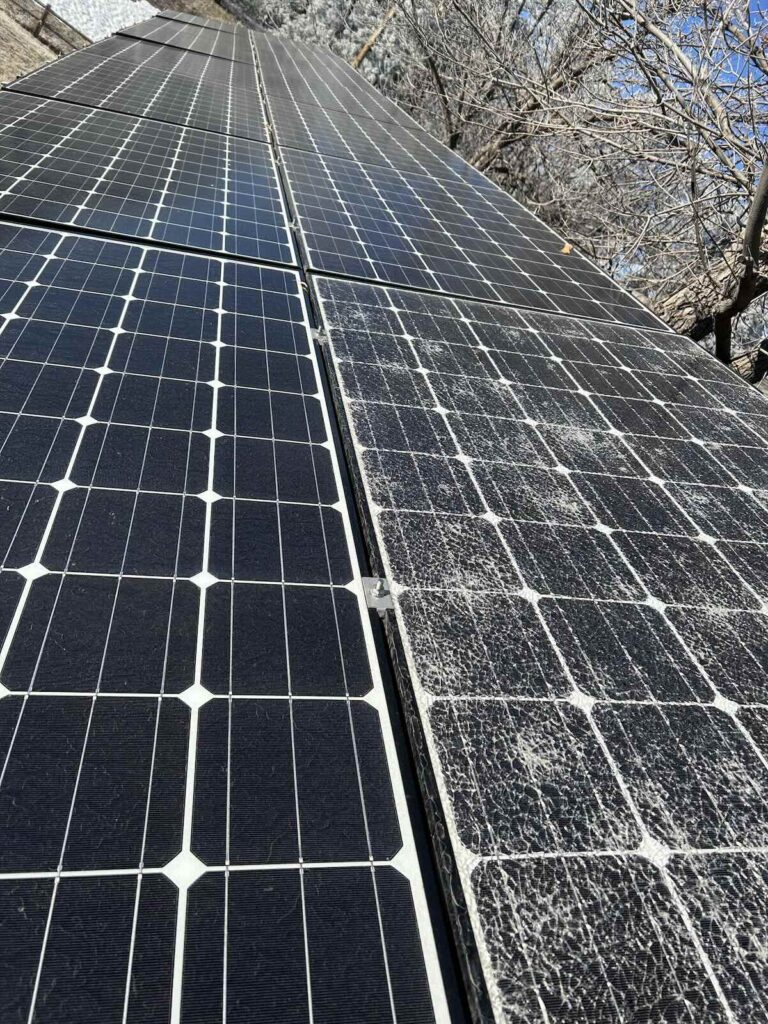
Assessing the Damage
Initial Inspection and Assessment
Following a hailstorm, conducting an initial inspection to evaluate your solar panels’ damage is essential. This first step aids in spotting visible damage signs, such as cracks, breaks, or shattered glass, and checking for debris accumulation on or around the panels. While this inspection offers a basic damage overview, it’s important to note that some damages, like microcracks in the solar cells, might not be immediately apparent
Professional Evaluation by Experts
A comprehensive evaluation by solar panel experts is indispensable for assessing the full damage extent. This is pivotal in detecting issues like cell cracks, hot spots, and other internal defects that could compromise the panel’s functionality. A detailed report documenting the damages and their potential effects on panel efficiency is subsequently prepared.
Deciding Between Repair and Replacement
After the assessment, deciding whether to repair or replace the damaged solar panels is necessary. Minor surface damages can often be fixed with straightforward solutions such as sealant application or minor soldering. However, replacing the panels might be unavoidable for more severe damages, like extensive cracks or broken glass. Ensuring that any repairs or replacements align with the existing system’s specifications is vital for preserving coherence and efficiency. Moreover, dealing with warranty and insurance claims requires a methodical approach, including verifying the solar panel warranty and, if applicable, initiating a claim with your insurance provider.
Post Solar Panel Removal
Disposal or Recycling of Damaged Panels
After removing the damaged solar panels, proper disposal is essential. Solar panels contain hazardous substances like lead and cadmium, necessitating careful handling to prevent environmental damage. Recycling the panels is encouraged to salvage valuable materials and reduce environmental impact.
If recycling is not an option, ensure the panels are disposed of through a reputable solar panel disposal service that complies with local regulations and safety standards. Proper disposal is environmentally responsible and ensures compliance with legal and regulatory frameworks.
Restoring Your Roof After Solar Panel Hail Damage
Inspecting the Underlying Roof Structure
Removing solar panels unveils the perfect opportunity to inspect the roof structure beneath. This step uncovers potential issues such as damage or rot in the wood, missing or damaged shingles, and evidence of water intrusion that were previously obscured by the panels. A comprehensive inspection at this stage helps identify and address any repair needs, ensuring the roof’s stability and durability. For an accurate assessment, a professional roofer is recommended to examine the roof and provide a detailed report on necessary repairs.
Repairing Damage to the Roof
Following the inspection, repairing any identified damage to the roof is imperative. This might include replacing compromised shingles, fixing or replacing decayed wood, or resolving any water damage and leaks. A well-maintained roof is essential for a solid foundation for the solar panels. In cases where the roof needs extensive repairs or a complete replacement, it’s advisable to complete these repairs prior to reinstalling the solar panels. Addressing these issues beforehand eliminates the need for future panel removals, ultimately saving both time and resources.
Preparing the Roof for New Solar Panels
With the necessary repairs out of the way, the next step is preparing the roof for the solar panels’ return. This preparation includes cleaning the roof surface, removing any debris, and ensuring that all mounting hardware is securely in place. If new roofing materials are installed, verifying their compatibility with the existing mounting equipment is essential to prevent installation issues. Moreover, reinstalling any flashings or sealants removed during the panel detachment is key to preserving the roof’s integrity. A professional solar installer’s expertise can be invaluable in ensuring the roof is ready and the solar panels are reinstalled efficiently to maximize their performance and lifespan.
Reinstallation or Upgrade of Solar Panels
Integration with Existing Electrical Systems
Whether you decide to replace broken modules, leave them out of the system, or replace them with a similar module, they must seamlessly integrate with your existing electrical setup. This process entails reconnecting the solar panels to the inverter, transforming DC power into AC power, and harmonizing the system with your home’s electrical. Collaborating with a skilled solar installer ensures all electrical connections are executed properly and safely.
They will also confirm that the system is operating at peak performance and that you have secured all necessary permits and approvals.
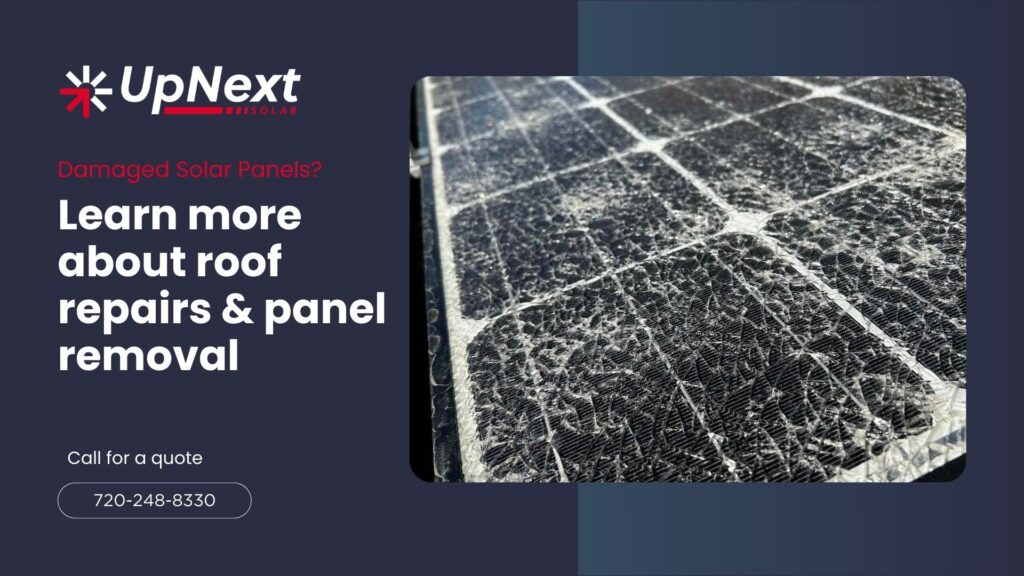
Mitigating Future Solar Panel Hail Damage
Protective Measures for Solar Panels
Nothing can be done to prevent a solar panel hail damage story, however to effectively mitigate future hail damage, adopting protective measures is essential. Utilizing solar panels equipped with thicker front glass, specifically those 3.2 mm or thicker, has proven to diminish the risk of hail damage substantially.
Advanced Materials and Technologies
The ongoing advancements in solar panel technology significantly enhance the resilience of solar panels to hail damage. Manufacturers are incorporating advanced materials and undertaking extensive testing to certify that their panels can endure the impact of more significant and denser hailstones. This includes the design of modules with more robust glass and frames and conducting tests that exceed the standard IEC requirements, aiming for superior durability. Introducing tests involving larger diameter ice-balls at increased velocities offers a more reliable assurance of the panels’ capability to withstand severe hailstorms.
Insurance and Warranty Considerations
When looking to mitigate future solar panel hail damage, giving due consideration to insurance and warranty is vital. Reviewing your homeowner’s insurance policy and the warranties on your solar panels is essential to understand the extent of coverage provided in case of hail damage. Many insurance policies extend coverage to hail damage, and warranties may offer specific remedies to repair or replacement. A thorough understanding of your policy and warranty can significantly streamline the process should your solar panels suffer from hail damage. Furthermore, some insurance companies are now undertaking their own hail testing to assess the performance and reliability of solar panels, potentially affecting policy rates and terms of coverage.
In wrapping up, addressing hail damage to solar panels demands a well-rounded strategy. It’s essential to carefully evaluate the extent of the damage, make an informed choice between fixing or replacing, and guarantee the roof’s condition is restored prior to the panels’ reinstallation. Opting for superior, hail-proof solar panels can help avoid similar issues in the future.
It’s also important to ensure that any new solar panels are correctly integrated into your existing electrical setup. Additionally, exploring insurance and warranty options can further protect your solar energy investment. By being proactive, you can secure your solar panel system, ensuring its efficiency and continuous renewable energy production.
